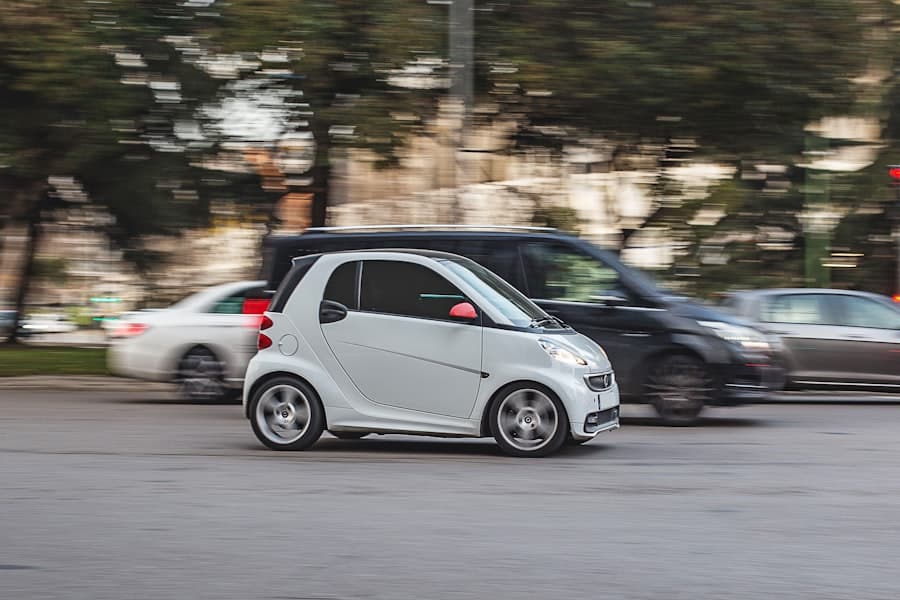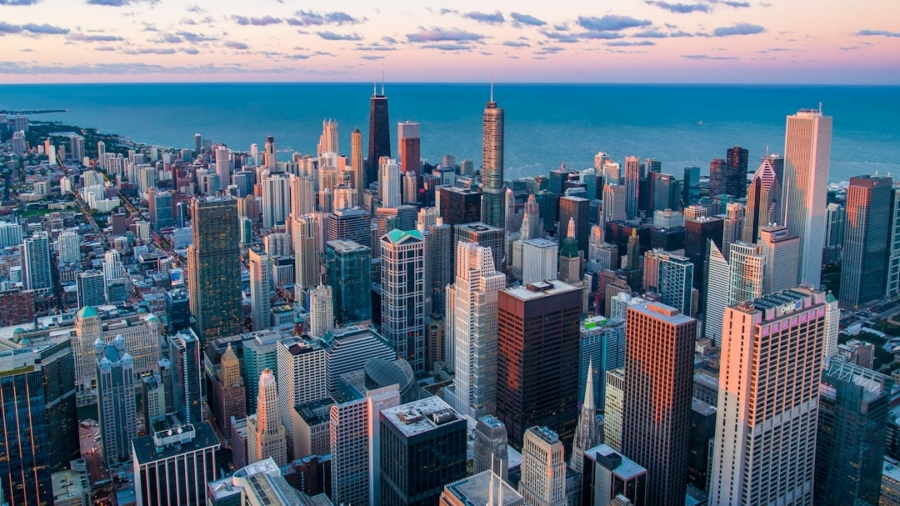The concept of smart cities has gained significant traction in recent years, driven by rapid urbanization and the increasing need for efficient resource management. As populations swell in urban areas, cities face mounting challenges such as traffic congestion, pollution, and inadequate public services. Smart cities leverage technology to address these issues, integrating information and communication technologies (ICT) with urban infrastructure to enhance the quality of life for residents.
This transformation is not merely about adopting new technologies; it represents a fundamental shift in how cities operate, making them more responsive to the needs of their inhabitants. Cities like Barcelona and Singapore have emerged as pioneers in this domain, implementing smart solutions that range from intelligent traffic management systems to advanced waste management technologies. In Barcelona, for instance, the city has deployed a network of sensors that monitor traffic flow and adjust traffic signals in real-time, significantly reducing congestion.
Similarly, Singapore’s Smart Nation initiative aims to harness data analytics and IoT to improve urban living conditions, showcasing how technology can be harnessed to create more livable and sustainable urban environments. The rise of smart cities is not just a trend; it is a necessary evolution in urban planning that seeks to create resilient communities capable of adapting to future challenges.
Key Takeaways
- Smart cities are on the rise, utilizing technology to improve urban living and sustainability.
- Green technologies play a crucial role in promoting sustainability and reducing environmental impact in smart cities.
- Advancements in renewable energy are key to powering smart cities and reducing reliance on fossil fuels.
- The Internet of Things (IoT) is revolutionizing smart cities by enabling efficient resource management and infrastructure monitoring.
- Smart infrastructure and urban planning are essential for creating sustainable and efficient cities for the future.
Green Technologies and Sustainability
Green technologies are at the forefront of the sustainability movement, providing innovative solutions to reduce environmental impact while promoting economic growth. These technologies encompass a wide range of applications, from renewable energy sources like solar and wind power to energy-efficient building materials and waste management systems. The integration of green technologies into urban planning is essential for creating sustainable cities that minimize their carbon footprint and enhance the quality of life for residents.
For example, green roofs and walls are becoming increasingly popular in urban environments, offering insulation benefits while also improving air quality. These living structures not only reduce energy consumption but also provide habitats for urban wildlife, contributing to biodiversity in densely populated areas. Additionally, advancements in smart grid technology allow for more efficient energy distribution and consumption, enabling cities to optimize their energy use while integrating renewable sources into the existing infrastructure.
By prioritizing green technologies, cities can foster a culture of sustainability that encourages residents to engage in environmentally friendly practices.
Advancements in Renewable Energy

The shift towards renewable energy sources is a critical component of the smart city movement, as cities seek to reduce their reliance on fossil fuels and mitigate climate change. Technological advancements in solar, wind, and other renewable energy sources have made them more accessible and cost-effective than ever before. For instance, the cost of solar photovoltaic (PV) systems has plummeted over the past decade, making solar energy a viable option for both residential and commercial applications.
This democratization of energy production empowers individuals and communities to generate their own electricity, reducing dependence on centralized power grids. Wind energy has also seen significant advancements, with larger and more efficient turbines being deployed both onshore and offshore. Countries like Denmark have successfully integrated wind power into their national energy mix, demonstrating that renewable sources can provide a substantial portion of a city’s energy needs.
Furthermore, innovations in energy storage technologies, such as lithium-ion batteries and emerging alternatives like solid-state batteries, are crucial for addressing the intermittency issues associated with renewable energy sources. These advancements not only enhance energy security but also contribute to the overall resilience of smart cities.
The Role of IoT in Smart Cities
The Internet of Things (IoT) plays a pivotal role in the development of smart cities by enabling seamless communication between devices and systems. IoT technology allows for the collection and analysis of vast amounts of data from various sources, including sensors embedded in infrastructure, vehicles, and even personal devices. This data-driven approach facilitates informed decision-making and enhances the efficiency of urban services.
For example, smart waste management systems utilize IoT sensors to monitor waste levels in bins, optimizing collection routes and reducing operational costs. Moreover, IoT applications extend to public safety and emergency response systems. Smart surveillance cameras equipped with facial recognition technology can help law enforcement agencies monitor public spaces more effectively, while connected emergency response systems can provide real-time information during crises.
As cities continue to evolve into smart ecosystems, the role of IoT will be instrumental in shaping their future.
Smart Infrastructure and Urban Planning
Smart infrastructure is a cornerstone of modern urban planning, encompassing everything from transportation systems to utilities and public spaces.
For instance, smart transportation systems utilize real-time data to optimize traffic flow, reduce congestion, and enhance public transit options.
Cities like Los Angeles have implemented adaptive traffic signal control systems that adjust signal timings based on real-time traffic conditions, resulting in smoother commutes for residents. In addition to transportation, smart infrastructure also includes water management systems that monitor usage patterns and detect leaks in real-time. This proactive approach not only conserves water but also reduces costs associated with infrastructure maintenance.
Furthermore, urban planners are increasingly incorporating green spaces into their designs, recognizing the importance of nature in enhancing urban resilience and promoting mental well-being among residents. By prioritizing smart infrastructure in urban planning efforts, cities can create environments that are not only functional but also conducive to sustainable living.
The Impact of Green Technologies on Quality of Life

The implementation of green technologies has a profound impact on the quality of life for urban residents. By reducing pollution levels and promoting sustainable practices, these technologies contribute to healthier living environments. For instance, electric vehicles (EVs) are becoming more prevalent in urban areas as charging infrastructure expands.
The transition to EVs not only reduces greenhouse gas emissions but also improves air quality, leading to better health outcomes for residents. Moreover, green technologies enhance recreational opportunities within cities. Urban parks equipped with solar-powered lighting and smart irrigation systems provide safe and enjoyable spaces for residents while minimizing environmental impact.
Additionally, initiatives such as community gardens promote local food production and foster social connections among residents. The integration of green technologies into everyday life encourages individuals to adopt sustainable practices, creating a culture of environmental stewardship that benefits both people and the planet.
Challenges and Opportunities for Smart Cities
While the rise of smart cities presents numerous opportunities for innovation and sustainability, it also comes with its share of challenges. One significant hurdle is the digital divide; not all residents have equal access to technology or the internet, which can exacerbate existing inequalities within urban populations. Ensuring that all community members can benefit from smart city initiatives requires targeted efforts to bridge this gap through education and infrastructure investment.
Another challenge lies in data privacy and security concerns associated with the extensive use of IoT devices and data collection systems. As cities become more interconnected, safeguarding sensitive information becomes paramount to maintaining public trust. Policymakers must establish robust frameworks that govern data usage while ensuring transparency and accountability in how data is collected and utilized.
Despite these challenges, the potential benefits of smart cities—such as improved efficiency, enhanced quality of life, and reduced environmental impact—present compelling opportunities for innovation and collaboration among stakeholders.
The Future of Smart Cities and Environmental Conservation
Looking ahead, the future of smart cities is intricately linked to environmental conservation efforts. As urban populations continue to grow, the need for sustainable solutions will become increasingly urgent. The integration of advanced technologies with conservation practices will play a crucial role in shaping resilient urban environments capable of adapting to climate change impacts.
For instance, cities may adopt circular economy principles that prioritize resource efficiency by reusing materials and minimizing waste. Furthermore, collaboration between governments, private sectors, and communities will be essential in driving forward-thinking initiatives that prioritize sustainability. Public-private partnerships can facilitate investment in green technologies while fostering innovation through research and development initiatives.
As cities embrace this collaborative approach, they will not only enhance their resilience but also contribute significantly to global efforts aimed at combating climate change. In conclusion, the evolution towards smart cities represents a transformative journey that intertwines technological advancement with sustainability goals. By harnessing the power of green technologies and innovative solutions like IoT, urban areas can create environments that are not only efficient but also conducive to a high quality of life for all residents.
As we navigate the complexities of urbanization in the 21st century, the commitment to building smarter cities will be pivotal in ensuring a sustainable future for generations to come.
In the context of exploring the future of smart cities built on green technologies, it’s essential to consider the role of mobility solutions in urban planning. An interesting related article is Mobility 2021: Early Bird Price Extended for One More Day, which discusses advancements in mobility that are crucial for the development of sustainable urban environments. This article highlights how innovative transportation solutions can contribute to the efficiency and eco-friendliness of smart cities, aligning with the broader goals of integrating green technologies into urban infrastructure.
FAQs
What are smart cities built on green technologies?
Smart cities built on green technologies are urban areas that utilize sustainable and environmentally friendly solutions to improve the quality of life for their residents. These cities incorporate technologies such as renewable energy, energy-efficient buildings, smart transportation systems, and waste management to reduce their environmental impact.
What are the benefits of smart cities built on green technologies?
Some of the benefits of smart cities built on green technologies include reduced carbon emissions, improved air quality, lower energy consumption, enhanced public transportation systems, and better waste management. These cities also promote sustainable living and provide a higher quality of life for their residents.
What are some examples of green technologies used in smart cities?
Green technologies used in smart cities include solar panels for renewable energy generation, energy-efficient LED lighting, smart grid systems for efficient energy distribution, electric vehicles for transportation, and advanced waste management systems for recycling and composting.
How do smart cities promote sustainability and environmental conservation?
Smart cities promote sustainability and environmental conservation by implementing green technologies that reduce energy consumption, minimize waste generation, and lower carbon emissions. These cities also prioritize green spaces, pedestrian-friendly infrastructure, and sustainable urban planning to create a more eco-friendly environment.
What are the challenges in building smart cities with green technologies?
Challenges in building smart cities with green technologies include high initial investment costs, technological integration complexities, regulatory barriers, and the need for public awareness and acceptance. Additionally, ensuring the security and privacy of data in smart city systems is a significant challenge.

